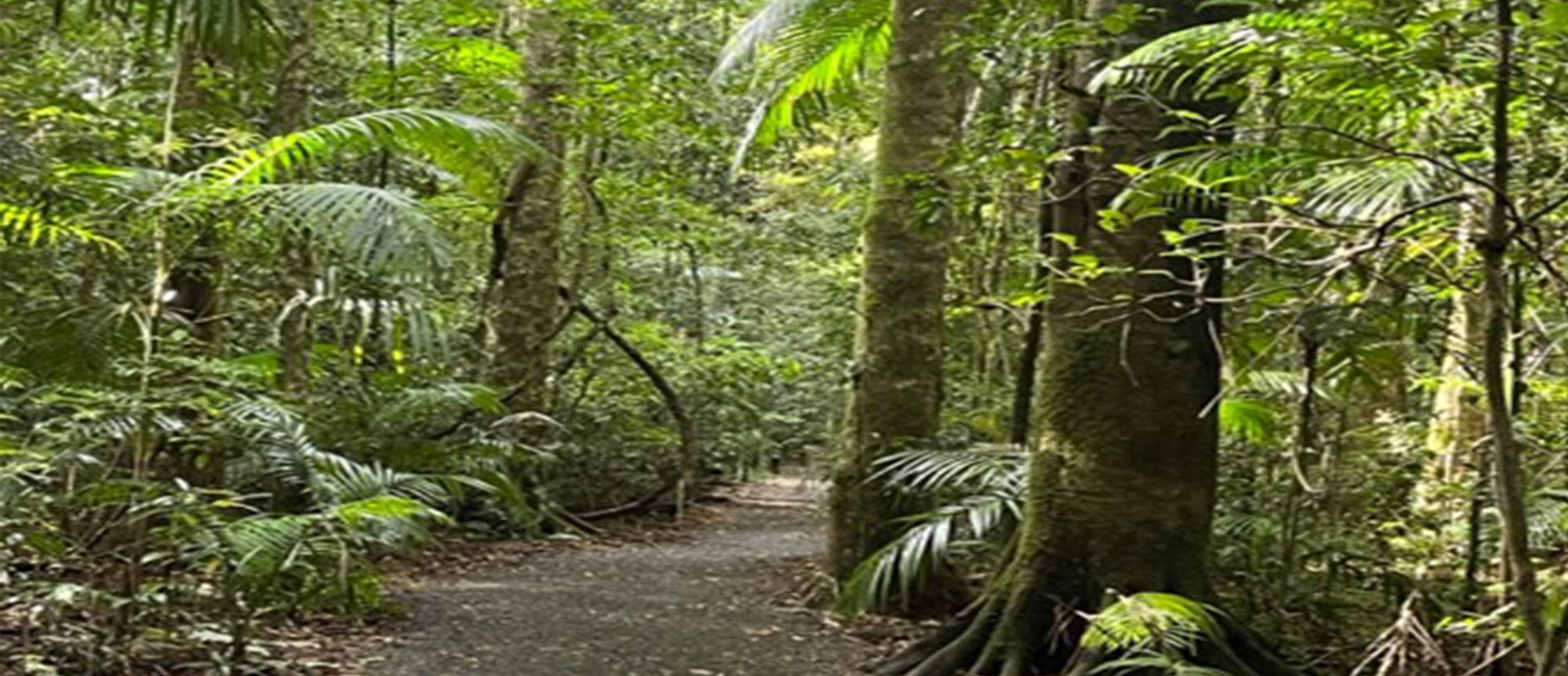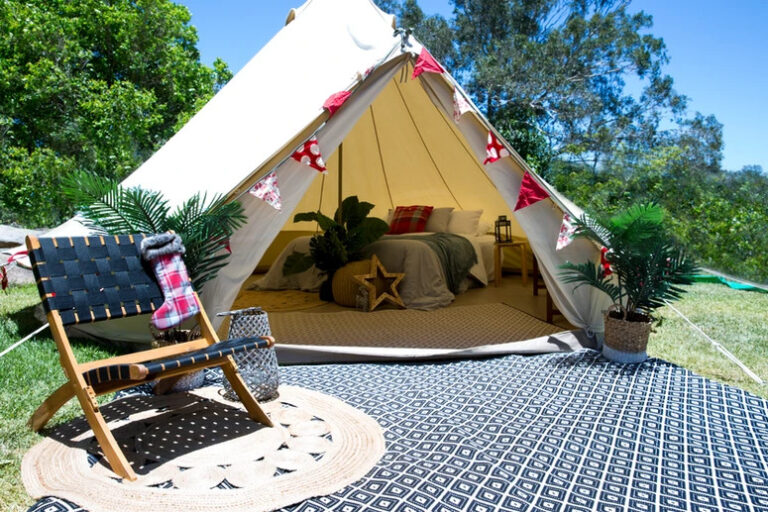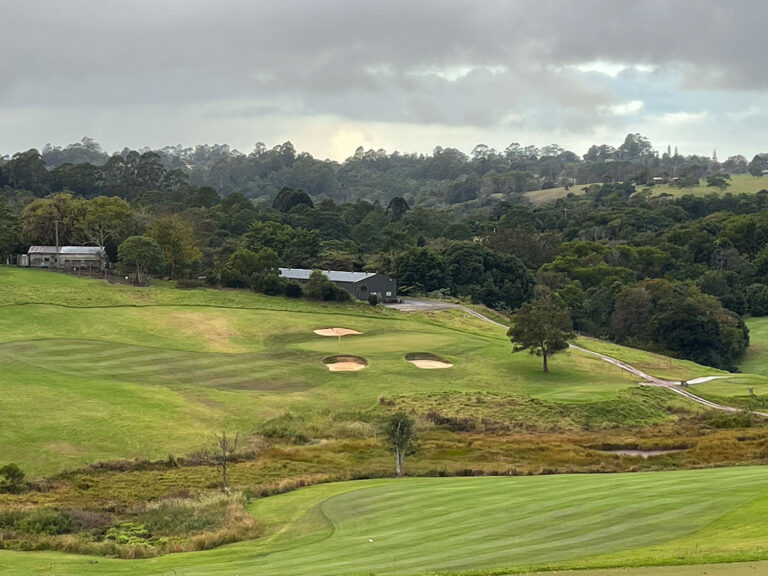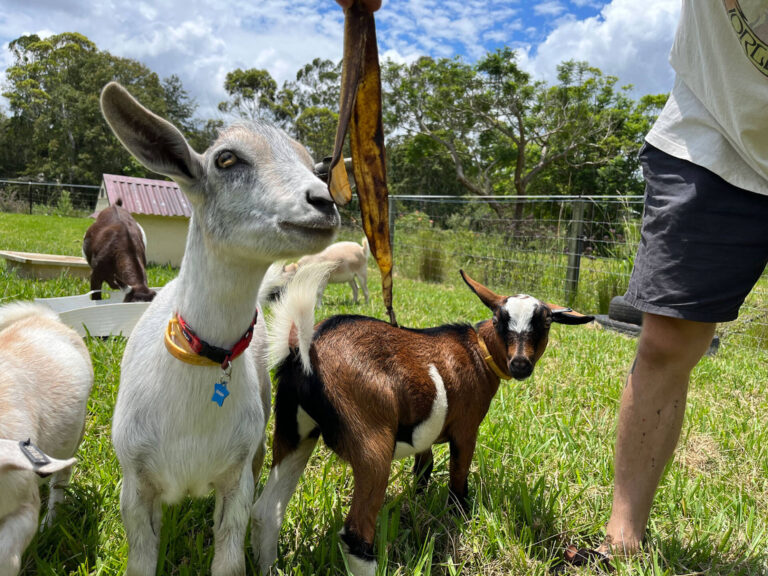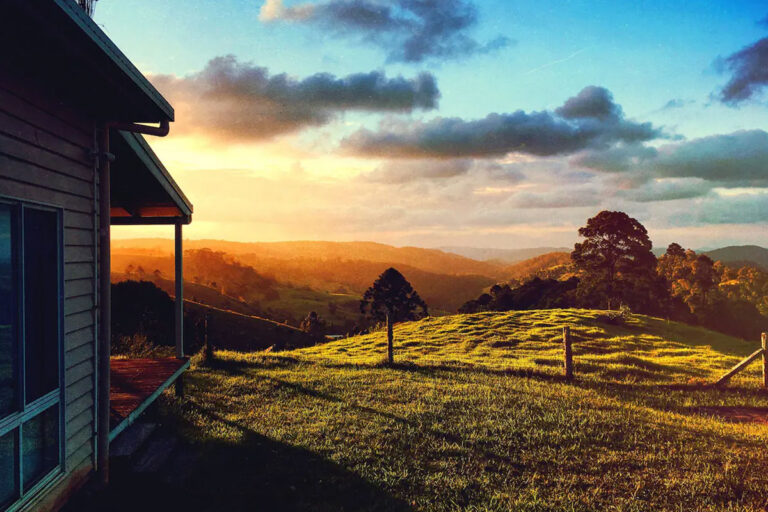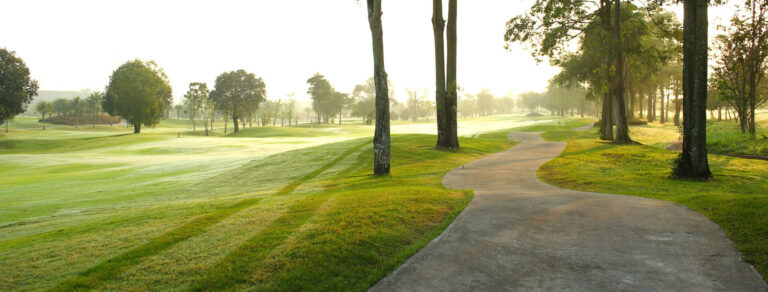Mary Cairncross Reserve Tour
Mary Cairncross Reserve is one of the features and attractions that make our home town unique. But how often do we locals take full advantage?.
Well, I have to confess, having lived here for close to 15 years, unless we have visitors, I very rarely make the most of all the beautiful tours, locations and events that are the essence of Maleny life.
That is until another local who often hosts Wwoofers suggested taking the guided tour of Mary Cairncross Reserve.
She wanted to show them some of the beauty of Maleny before they moved on to their next location. For the grand total of $3.50 AUD per head we could take a peaceful and educational Tour.
Volunteers Lead Tours of Mary cairncross Reserve.
For a full hour, we could meander through the Reserve with one of the expert volunteers. As they shared their intimate knowledge of the flora and fauna. How could I say no to that!
We met at the entrance to the Discovery centre, where we were greeted by a Regina. A slight and enthusiastic guide with a lovely German accent. We were in for a treat.
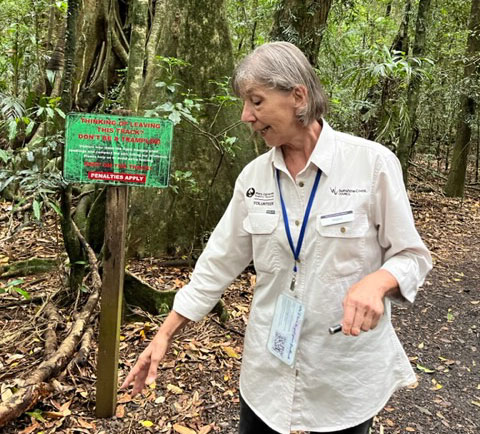
She not only proved to be incredibly knowledgeable and passionate about the region but had a great sense of humour. Especially when it came to her ‘babies’ as she called the reserve’s trap door spiders!
As we wandered down the path, the first thing she pointed out was some odd looking leaves and sticks poking straight up along the edge of the path.
Giant Earth Worms
Apparently, that signified the entrance to the burrow of the giant earth worm. She then took 10 minutes explaining all things giant earthworm related, I was spell bound. Who knew, they truly are remarkable creatures (*Note I said she had a great sense of humour and passion and used it to make the topic of earthworms extremely entertaining).
It turns out those leaves are the Worm’s day time snack for when they get hungry. As they are heading back into their burrow at dawn, they make sure to drag a few leaves into the entrance.Just in case they get hungry and fancy a snack before nightfall. Clever little creatures!
Well not so little, a giant earthworm can grow up to a metre long and be as thick as a man’s thumb! That would make me look twice if I found one in my veggie garden!
I know this topic could sound boring, after all, how interesting can an earthworm be, but that’s the benefit of having a passionate guide sharing all the magic of these creatures and so much more.
ancient Trees and Vines throughout the Reserve
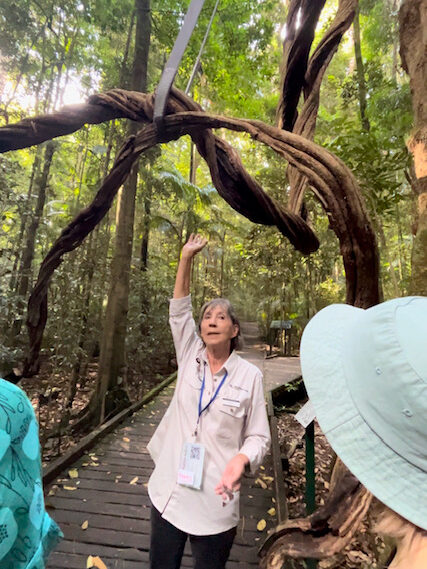
As we ventured further into Mary Cairncross Reserve, Regina pointed out ancient strangler figs, red cedars and other giants of the forest. She showed us a Wonga Vine that is believed to be 450 years old!
It is quite remarkable to think that this vine, and so many of the trees were here for generations before any of “us”.
I for one, am incredibly grateful for the foresight of Mary Thynne’s daughters, Elizabeth, Mabel and Mary. In October 1941, they donated 100 acres (55 hectares) of remnant rainforest in perpetuity to be named Mary Cairncross Reserve as a tribute to their mother. (Cairncross was her maiden name).
We hadn’t ventured more than 100 metres down the path before Regina pointed out some bizarre looking fungi which was just one of the hundreds of remarkable fungi to be found in the reserve.
She also reminded us of the pathogen control station where we cleaned our shoes on entry to the reserve. This is a fragile ecosystem and worth protecting, so if you are planning a walk through the Mary Cairncross Reserve alone, make sure you support this natural treasure by using this easy access control station just inside the entrance.
Wide Range of Fungi
It became a fun, competitive, challenge seeing how many different types of fungi we could spot. They varied from the size of a dinner plate to the most delicate, tiny clusters tucked into decomposing tree trunks and branches. Fallen trees are left where they lay, to preserve the natural life cycle of the rainforest in Mary Cairncross Reserve.
Regina was a wealth of knowledge about the value and purpose of the Mycelium. (Dictionary definition; the vegetative part of a fungus consisting of a network of fine filaments). Specifically, how it’s used to transport nutrients and information under the forest floor.
She compared it to our 5G broadband communication system and I understood the reference. To think of all that going on below our feet as we stood there was incredible.
Plants even use the Mycelium to support a sick plant and basically nurse it back to health through this system. Come on, you have to agree, that’s pretty impressive!* Side note, the largest Mycelium recorded is in Oregon and is approximately 3.5 square miles, WOW!
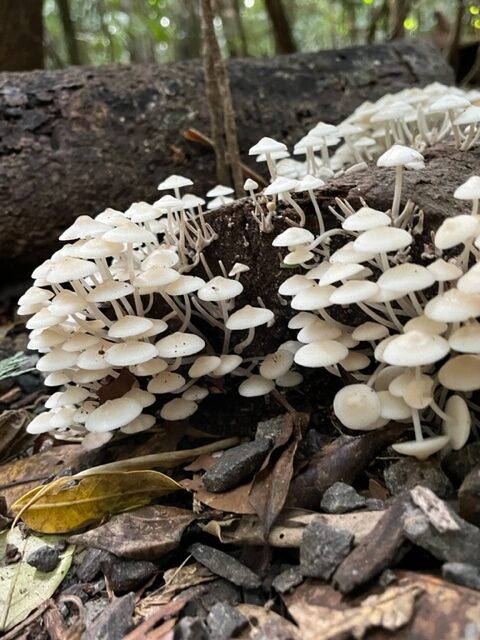

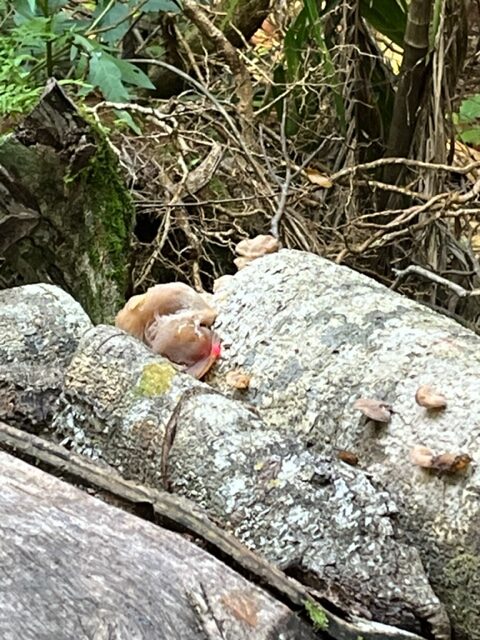
In the Reserve there are a couple of options in regards to the length of walk you can take. None are overly strenuous as the paths and board walks are pretty level, well maintained and with no steep hills etc.
Mary Cairncross Pademelon Loop
You can do the full loop which is approx. 1.7ks or take the shorter one known as Pademelon Loop. That’s what we elected to do as we’d specifically requested seeing Pademelons.
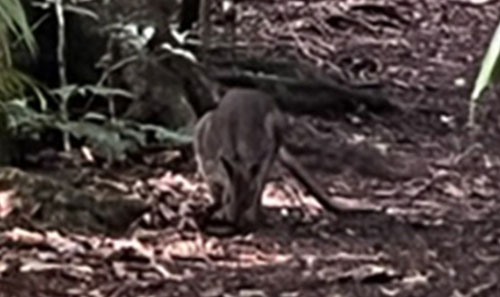
Mary Cairncross Reserve is home to the Red Legged Pademelon. A marsupial similar to a Wallaby but with some distinct differences.
The Pademelon is smaller and stockier, with small ears and a stubby tail. All of which make for an incredibly cute little creature and it’s rare to not see one or more on this loop.
We were fortunate to see a few mums with their babies of various sizes as we quietly made our way along this less used path.
Once again Regina had some really interesting facts about the Pademelons and I couldn’t help thinking these were some of the luckiest little Pademelons I’d ever seen.
The 100 acre reserve is protected with dog/cat proof fencing and you aren’t allowed to take domestic pets into the Reserve. So, these little guys have very few predators plus the safety of a dense rainforest canopy to protect them from predators above. This, combined with a seasonal ever-changing supply of their ideal foods! Lucky little Pademelons!
25 year old Trap Door spiders
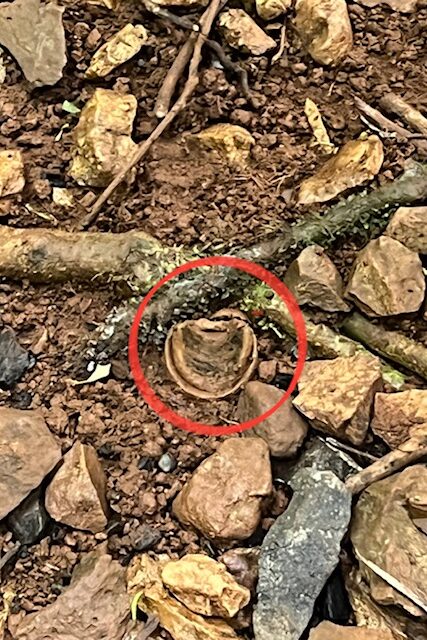
Next we arrived at what appeared to be a pretty ordinary fork in the path, but Regina pointed out what looked like a surveyors post and said we were about to meet one of her ‘babies’.
I was curious. She then used her laser pointer to highlight a little round disk located a few centimetres in from the path. OK so what was this little gem that she was so fond of?
To the horror of the Arachnophobes in our group, she then proceeded to explain that this was the front door to the Trapdoor Spiders’ home.
Apparently they build these ‘trap doors’ and quietly wait just below the surface until some innocent insect ventures past and becomes lunch. Luckily for me, I actually love spiders but a couple of our group took big steps back at this snippet of information. Regina clearly had the same love of spiders as me and proceeded to share all she knew about these fascinating creatures.
They have some that are 25 years old in the reserve. She mentioned that they aren’t the most exotic looking spiders. Being plain brown in colour are quite hard to spot. But considering they are ground dwellers, this form of camouflage makes perfect sense.
They live on crickets, moths, beetles and grasshoppers. The doors to their burrows are almost undetectable they are so well camouflaged. So I was thrilled to see one. I can’t wait to show the next person I take for a walk into the reserve!
For those of you who are a little spider phobic, you don’t need to worry about bumping into one of these guys as you stroll through the Reserve, they are incredibly shy and prefer to keep well out of sight.
Crayfish unique to Maleny
As we made our way down to Fryers creek, one of our group asked Regina what the holes were that appeared in the soil all around the board walk. She enthusiastically shared that they were the home of the Maleny Spiny Crayfish.


This species is unique to this area. It can only be found in the Blackall range around Maleny and it dates back to Gondwana land. That means it goes back tens of millions of years, and is as uniquely Aussie as our Kangaroo. How cool is that!
As well as being the location of a couple of perfect lookouts over the creek and the palm grove, this area is one of the famous roost sites for the local flying fox colony.
If you’re lucky enough to visit when they are in residence, it is fascinating, entertaining and very noisy as they chatter and argue throughout the day. Unfortunately they weren’t in residence that day, but having seen them many times before I wasn’t too disappointed.
This section of Mary Cairncross Reserve is also the home of a Piccabeen palm grove. It’s another spot where you can see many of the Maleny Spiny Crayfish burrows.
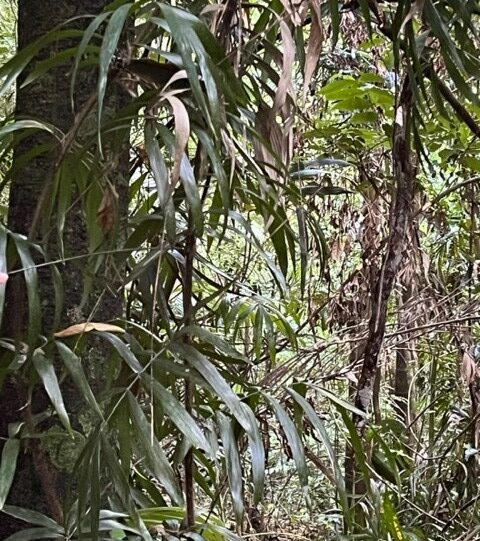
Apparently, these little guys are cranky little things and can be quite aggressive. So best not to poke around if you find yourself close to one of the burrow openings. (*side note, these little guys can live for up to 50 years!).
Fishing for Spiny Crayfish.
The Jinibara, traditional owners, used a plant locally known as the Wait-a-While vine or Lawyer vine as a fishing hook. Pushing the vine into the burrows they were able to catch the crayfish this way.
The Reserve is an incredible source of Aussie bush tucker, I wish we’d had longer with Regina so she could share more of her knowledge about the food sources in this incredible location.
Sadly, we noticed that we’d overstayed our visit with so many questions and fascinating conversation.
Under the canopy in Mary Cairncross Reserve, it was starting to get dark and we realised we’d better make our way back to the exit.
I could have kept going well into the night and watched the change from the daytime dwellers to the nocturnal residents. But, unfortunately, the Reserve closes to the public at 6pm. This is to protect the more vulnerable and timid nocturnal residents in this pristine rainforest reserve.
This is a tour I would highly recommend and whilst I’d love to personally recommend you book with Regina, I’m sure all of the volunteer experts are just as talented and passionate. If you’re visiting our beautiful town, or a local who hasn’t treated themselves to this experience, why not indulge yourself and perhaps follow it up with lunch or coffee at the equally stunning Mountain View café.

